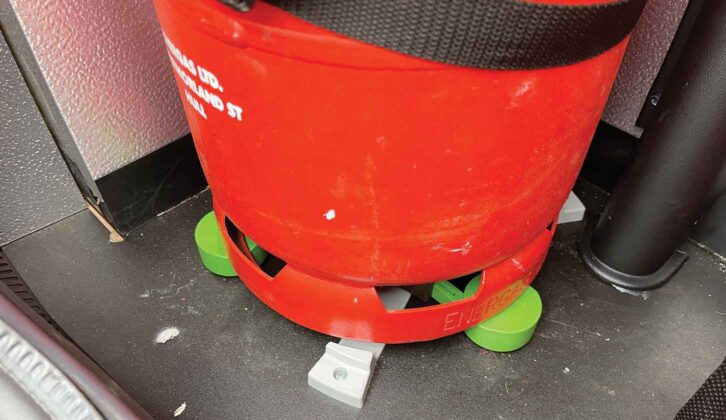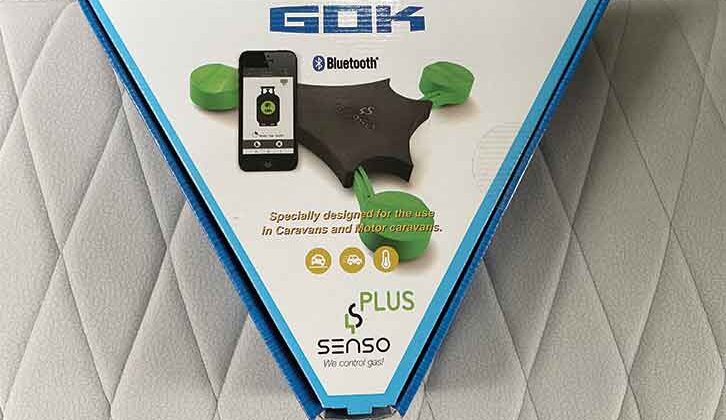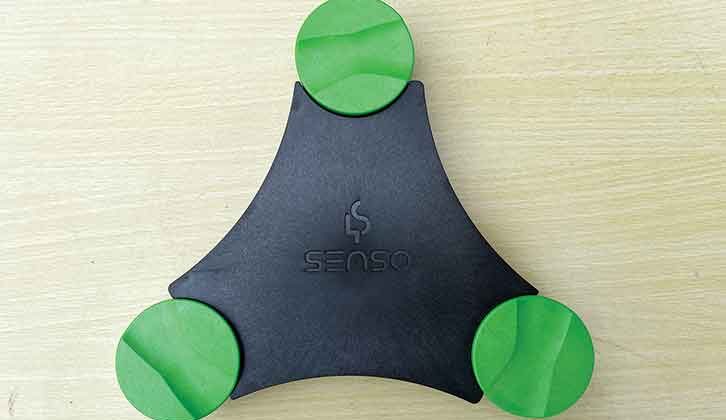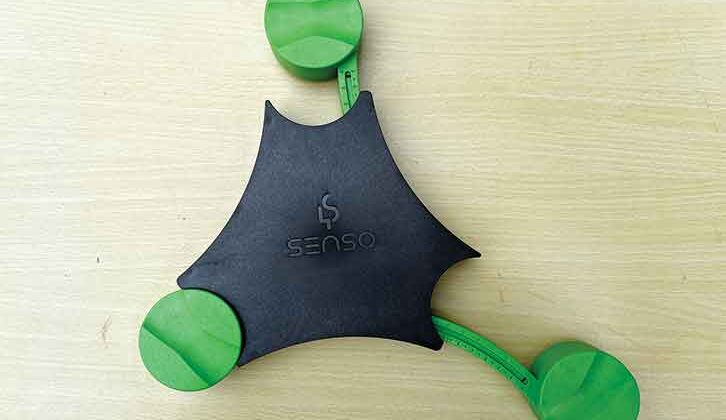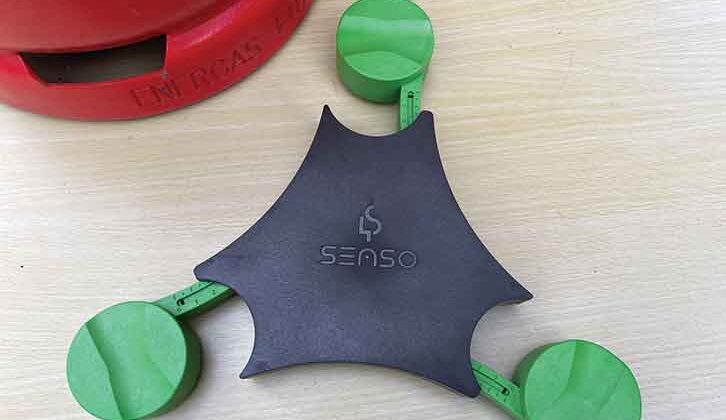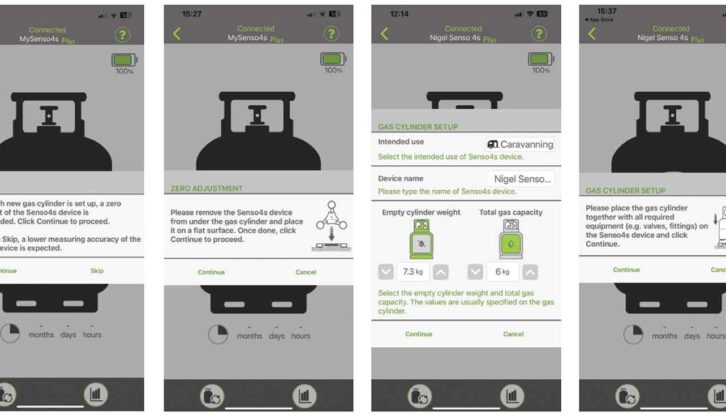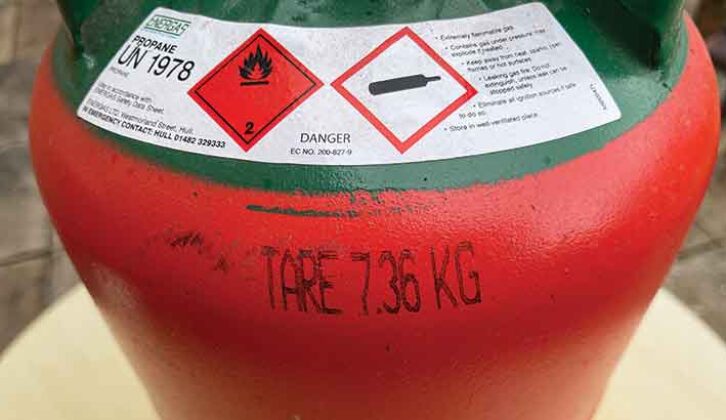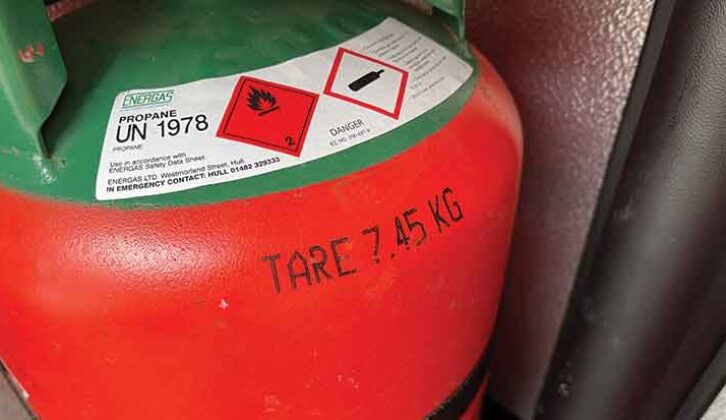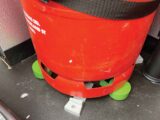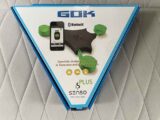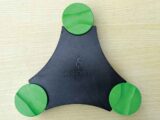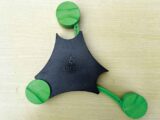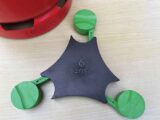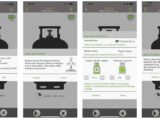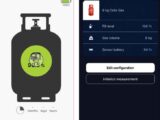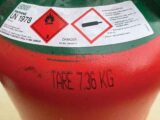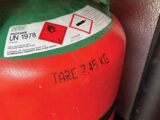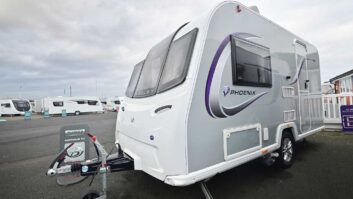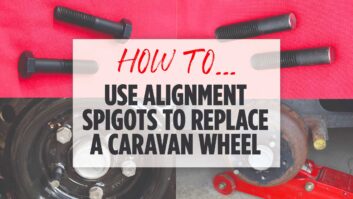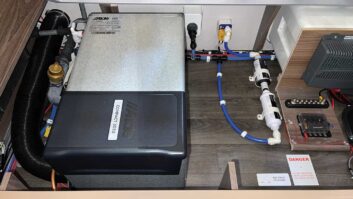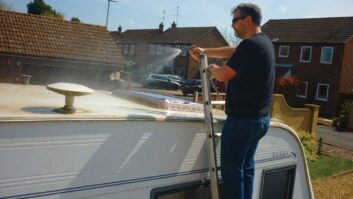For several years I have used a Truma LevelControl gas monitoring unit. For those who haven’t come across them, the LevelControl fits magnetically to the underside of the gas bottle, measures its contents and transmits the data to your phone via Bluetooth.
The device fits in the bottom rim of the cylinder, making it suitable for all sizes of bottle.
While the LevelControl has always worked perfectly, sadly, the same can’t really be said for this particular operator!
Truma also supplies a handy magnetic warning label, which attaches to the side of the gas bottle to remind you that the LevelControl is fitted.
However, that reminder only works if you remember to fix it to the bottle. And guess who’s changed cylinders a couple of times (swapping an empty for a full one), only to get home and recall the “old” bottle still had the LevelControl attached?
- We take a look at how you can set your Alde heating to delayed start.
Specialists in LPG
So I was understandably keen to test a similar gas monitoring device, from German company GOK, specialists in products for use with LPG. The Senso4s Plus is a digital level gauge.
The first thing to note with the Senso4s Plus is that the gas bottle sits on three extending feet, rather than being attached to the underside of the bottle.
You extend each of the feet from the centre block, so that each one fits under the bottom rim of the cylinder.
GOK says that the device is designed for bottles with a rim diameter of 18-32cm, making it suitable for most of those in the UK, and will support up to 45kg total weight (bottle plus gas), with a maximum LPG weight of 16kg. A typical UK 6kg propane bottle, when full, will weigh in at approximately 13-14kg.
There is also a GOK Senso Basic model, designed for static use, such as in home barbecues or permanently sited vehicles.
For tourers, the Senso4s Plus deals with movement (although it won’t transmit any data while you’re still on the move).
So, how do you use the unit? The first step is to download the Senso4s Plus app (suitable for Android and iOS devices) to your phone. Now insert three AAA batteries (not supplied) into the battery compartment in the Senso4s base unit, and ensure you have your phone’s Bluetooth turned on.
Setting up the GOK Senso4s Plus
Connect the app to the Senso4s Plus, ensuring that the devices are no more than 0.5m apart for the initial set-up. Once they are connected, you simply need to follow the instructions on the set-up wizard.
You will be prompted to enter the tare (empty) weight of the gas bottle, which will be marked on either the cylinder or a plate attached to it.
With the two identical gas bottles that I had, I noticed there were slight variations in the tare weights (one was 7.36kg and the other, 7.45kg). As the weights you can enter are only to one decimal place, this won’t be 100% accurate.
Then enter the filling weight, which in our case was 6kg.
If the gas bottle that you’re using is already fitted in the caravan, all well and good, but if not, the next step before doing anything else with the Senso4s is of course to install the cylinder. With the bottle in place, you then need to extend the feet equally from the base unit, so that the bottle sits in the grooves on them.
Installing the GOK Senso4s Plus
For me, this was the fiddliest part of the procedure, because our caravan has mountings to keep the bottles in place inside the front locker.
The feet magnetically attach to the bottle, but getting the device in the right place, so it would fit in the locker and not foul the caravan’s attachments, did take a bit of trial and error. We got there in the end. Then the gas bottle has to be secured in the normal manner.
With that done, you can read the measured values in the app – the firm claims the display shows the current filling level to an accuracy of +/-1%.
Each time you change a gas bottle, you’ll have to check the weight values that are entered in the app, especially bearing in mind the possible variations in the cylinder tare weight.
Not only does the app display how full the gas bottle is, but based on usage, it will predict how long it will last. Owing to the short time that I’ve had the unit, I haven’t been able to test the latter facility yet, but I plan to do so in due course.
As for the device’s accuracy, when I connected a full 6kg propane bottle to the Senso4s, it suggested that it was 99.5% full. The Truma LevelControl said 100% full, so both units
were reasonably accurate, and the GOK Senso4s Plus was well within its claimed limits.
Handy reminder
Although as mentioned, I did find fitting the Senso4s Plus in our caravan initially a tad fiddly, I really think it’s a huge plus that when it’s time to change your empty cylinder for a new one, and you lift the gas bottle out, there’s no chance of leaving the unit attached – you can’t miss those bright green feet!
I look forward to testing the device over a longer period.
A step by step guide to fitting a GOK Senso4s Plus
1. The GOK Senso4s Plus in the box.
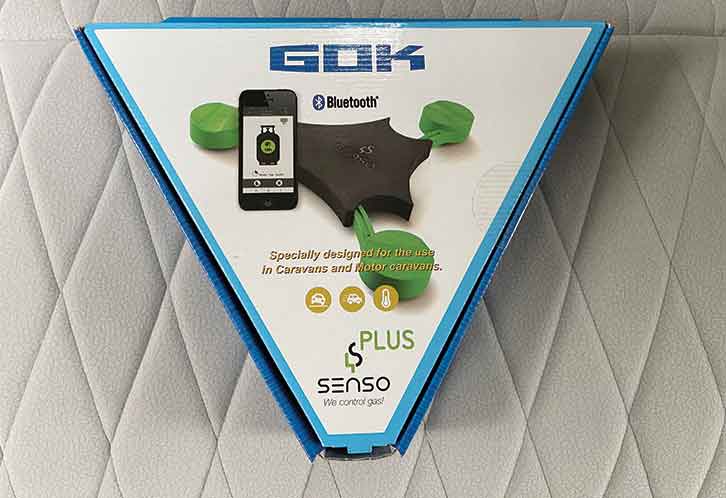
2. The base unit has three bright green feet.
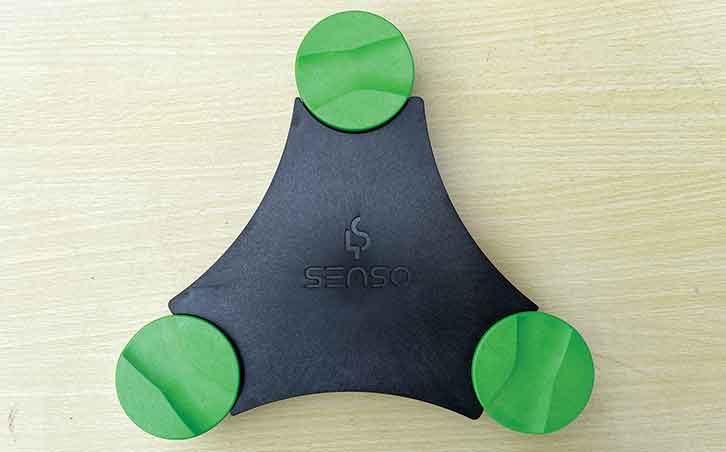
3. The feet extended by varying amounts.
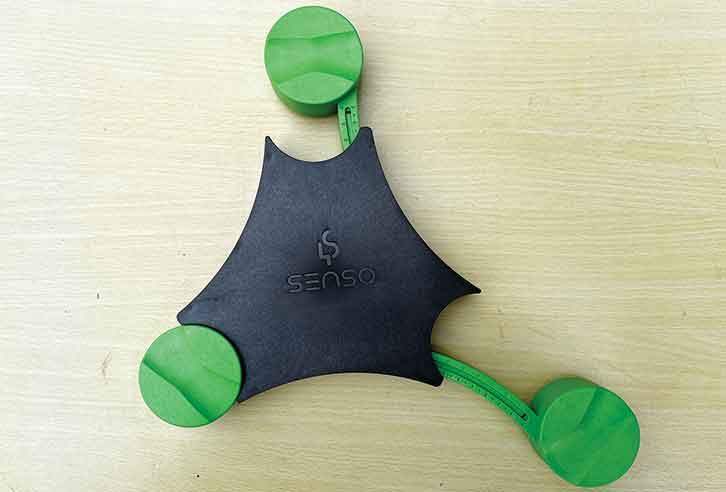
4. The GOK Senso4s Plus set correctly for a 6kg propane bottle.
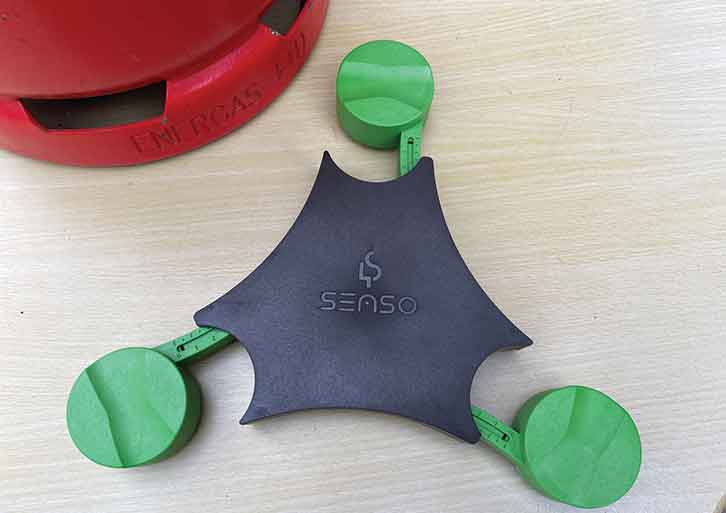
5. For the initial set-up, simply follow the instructions on the phone app
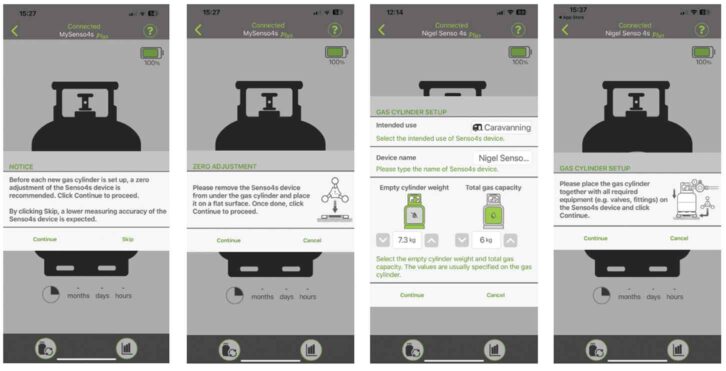
6. Gas bottle with the GOK Senso4s Plus, mounted in Nigel’s caravan.
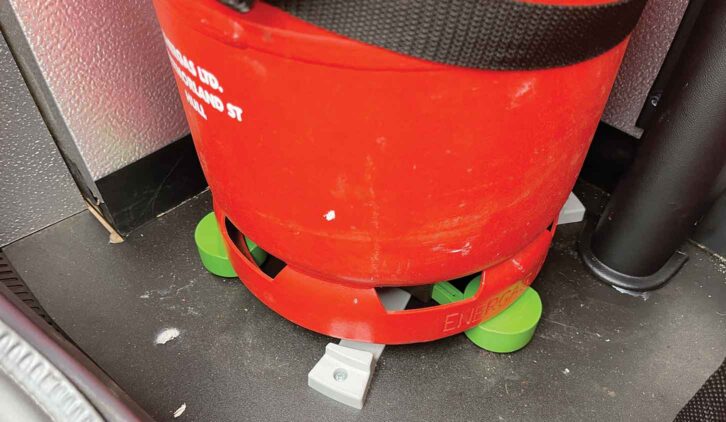
7. The GOK Senso4s Plus app showed the bottle as 99.5% full while the Truma LevelControl showed the same cylinder as being 100% full.
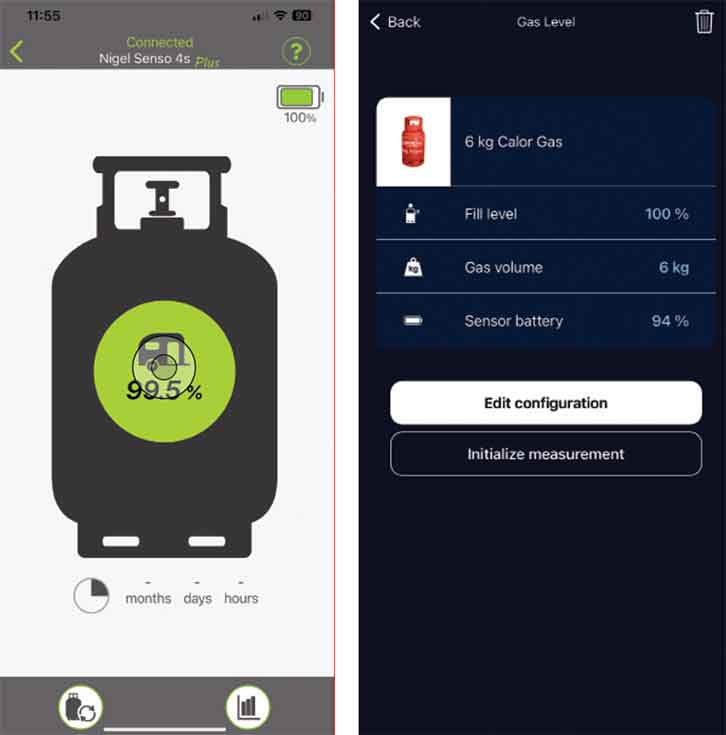
8. Identical bottles, but with different tare (empty) weights.
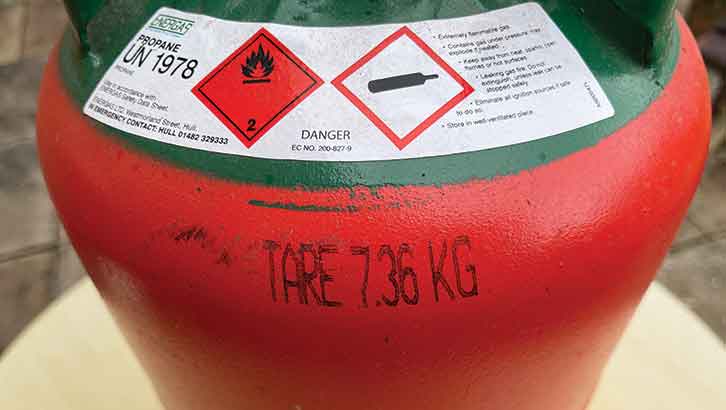
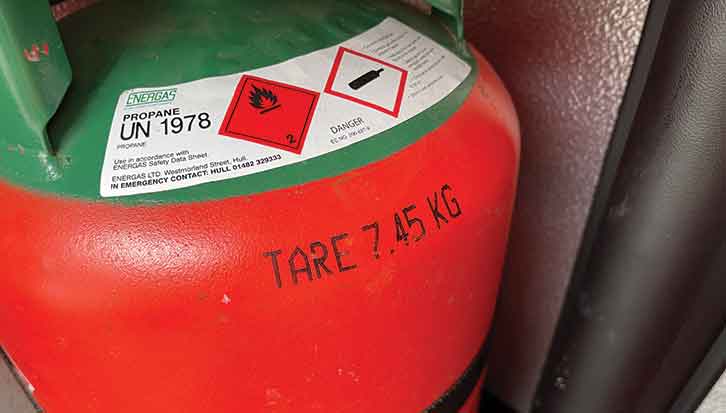
Looking for some more DIY for your ‘van? Then check these out
- We explain how you can repair a Whale Watermaster pump.
- We take a look at how to upgrade a TV amplifier.
- We talk you through the process of how to fit a new radio in a caravan.
If you’ve enjoyed reading this article, why not get the latest news, reviews and features delivered direct to your door or inbox every month. Take advantage of our brilliant Practical Caravan magazine SUBSCRIBERS’ OFFER and SIGN UP TO OUR NEWSLETTER for regular weekly updates on all things caravan related.
